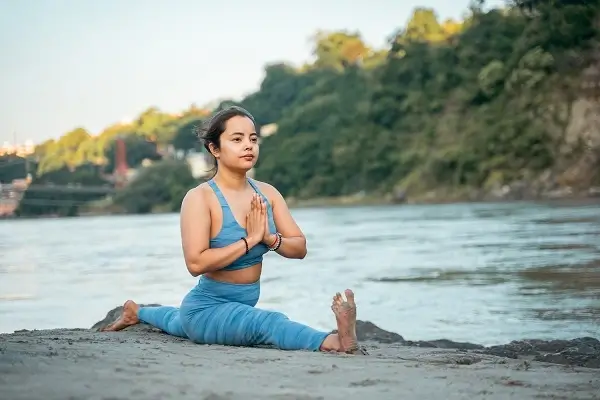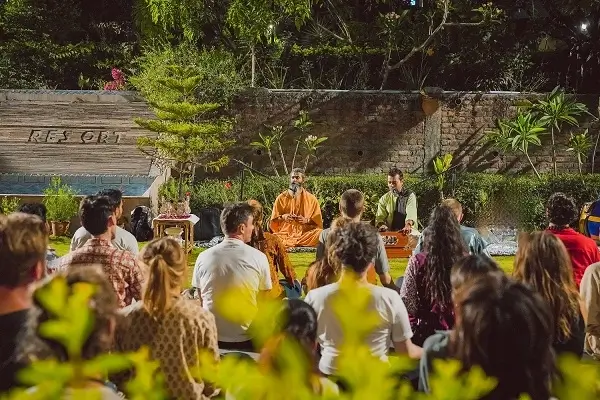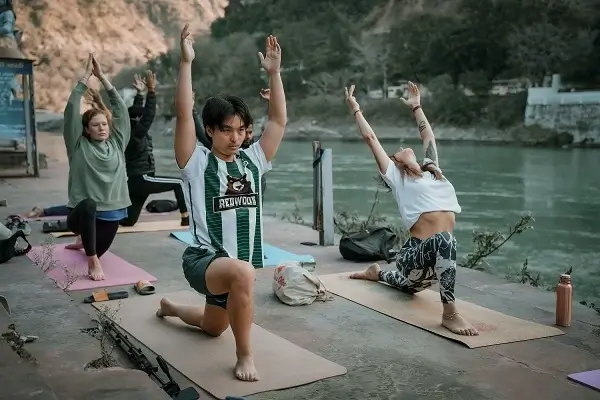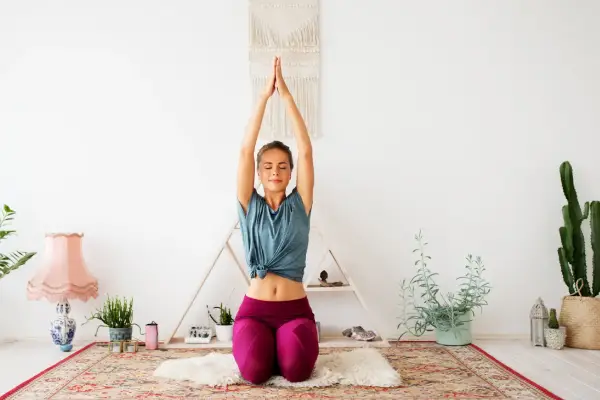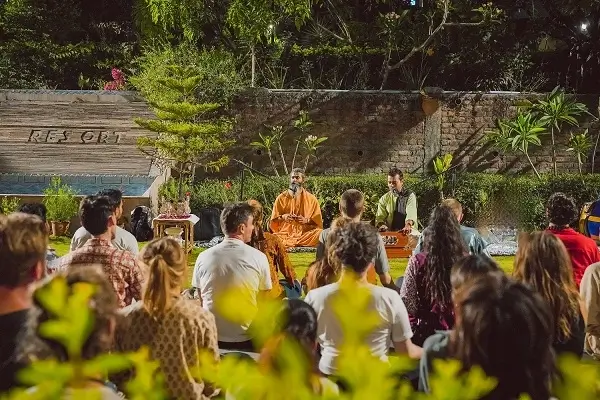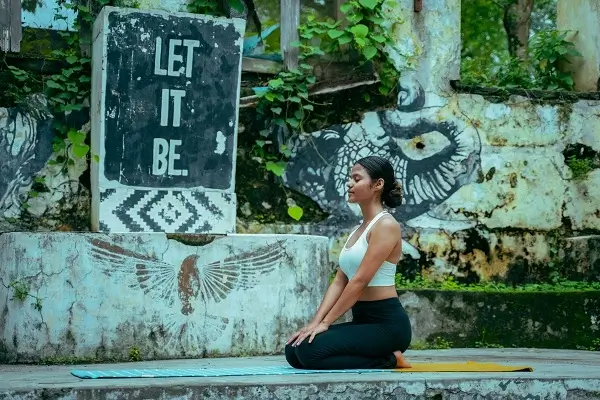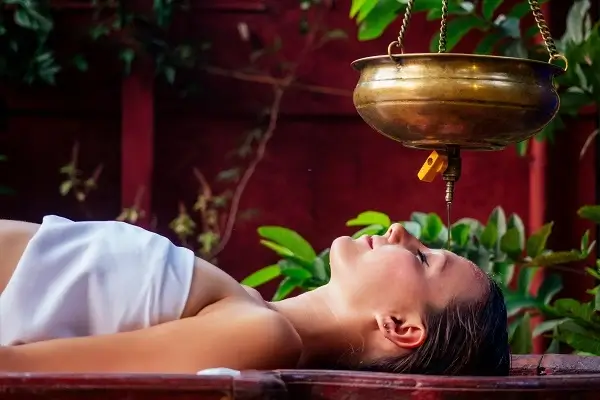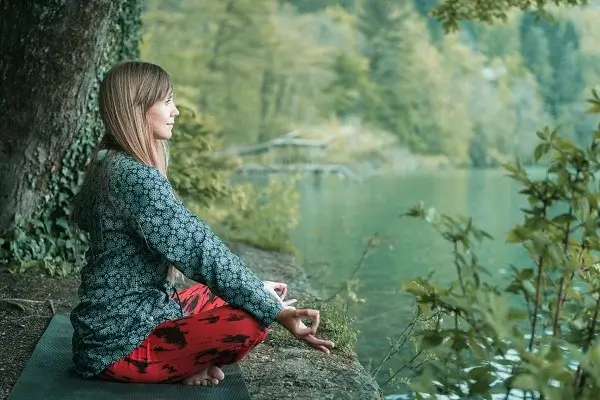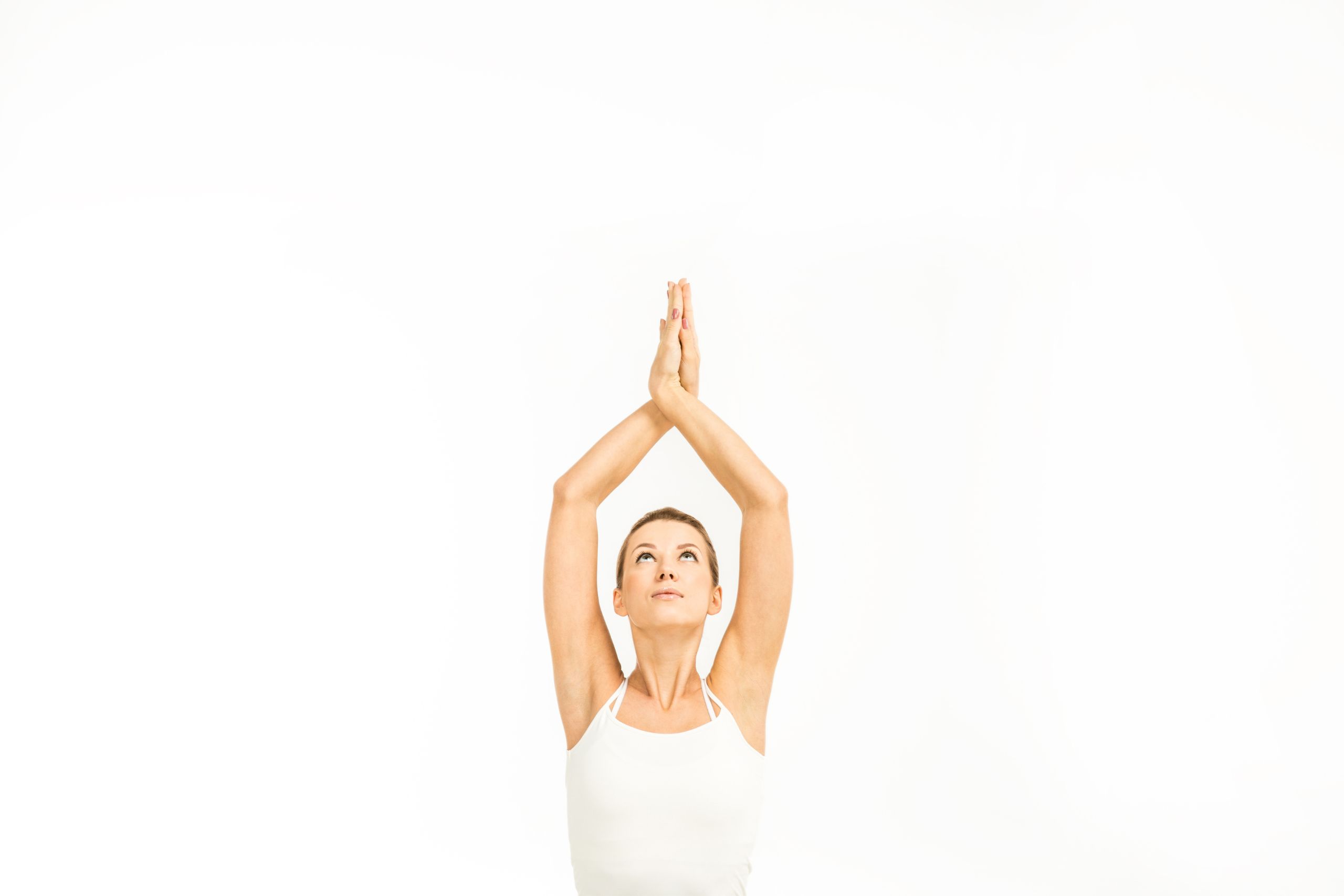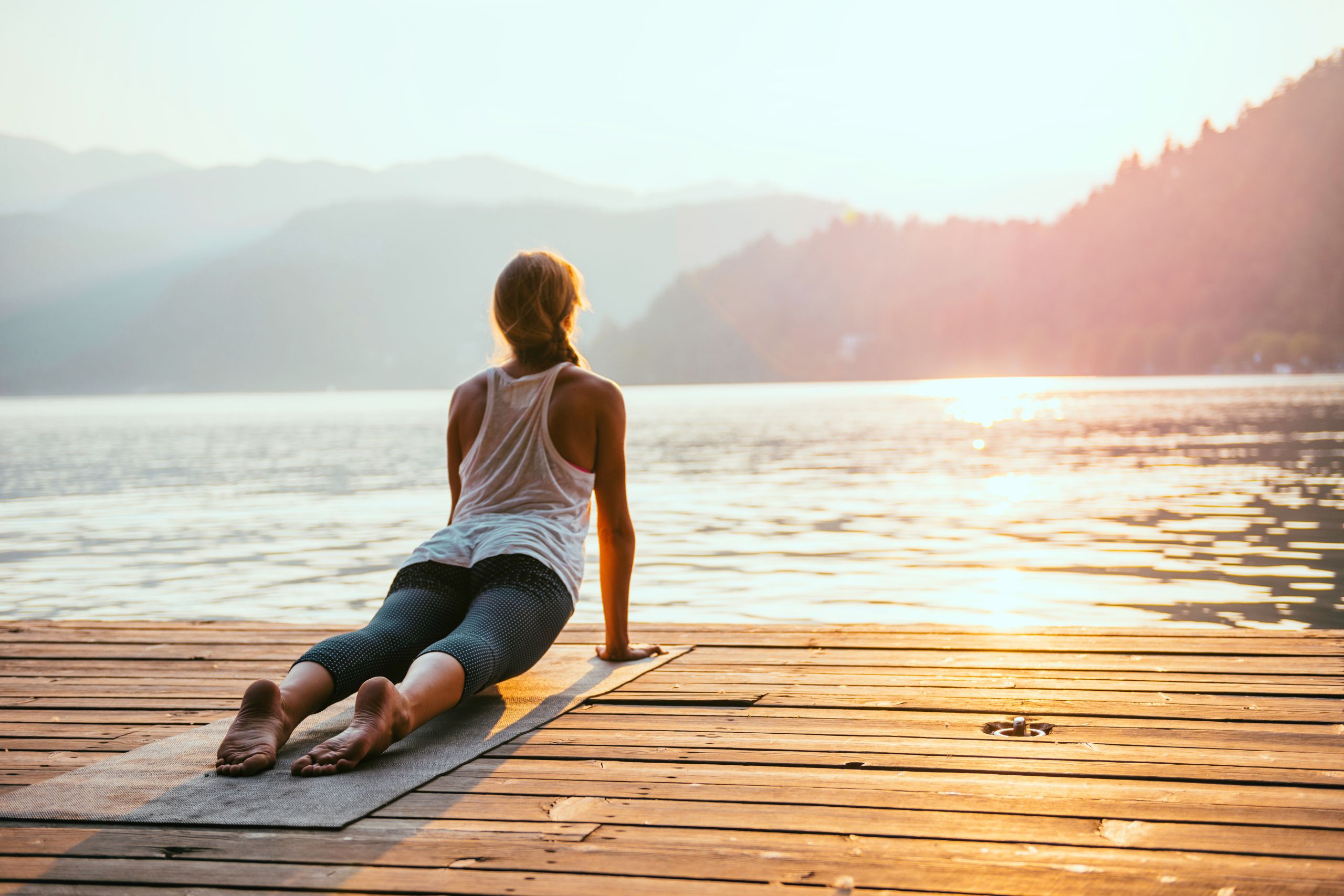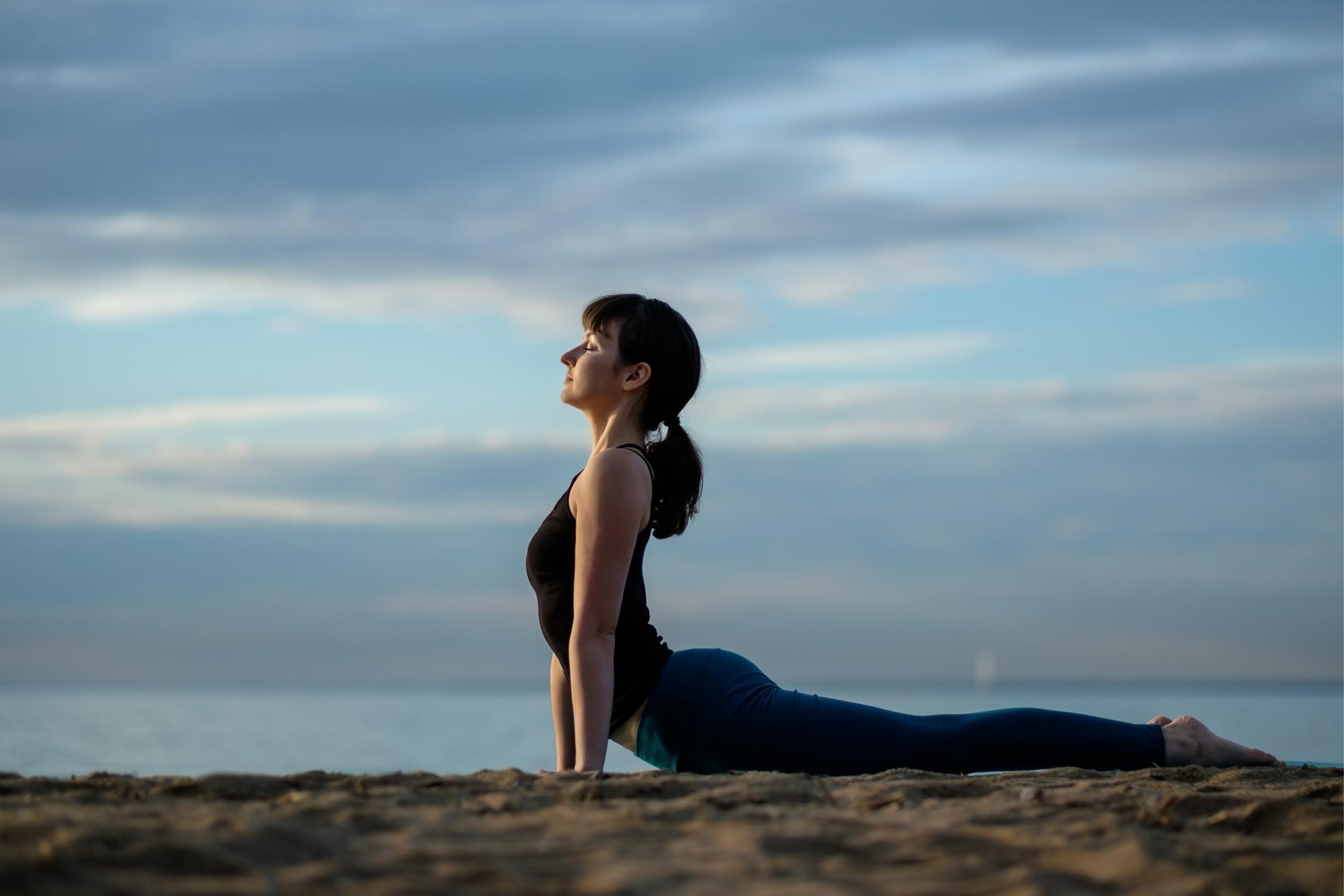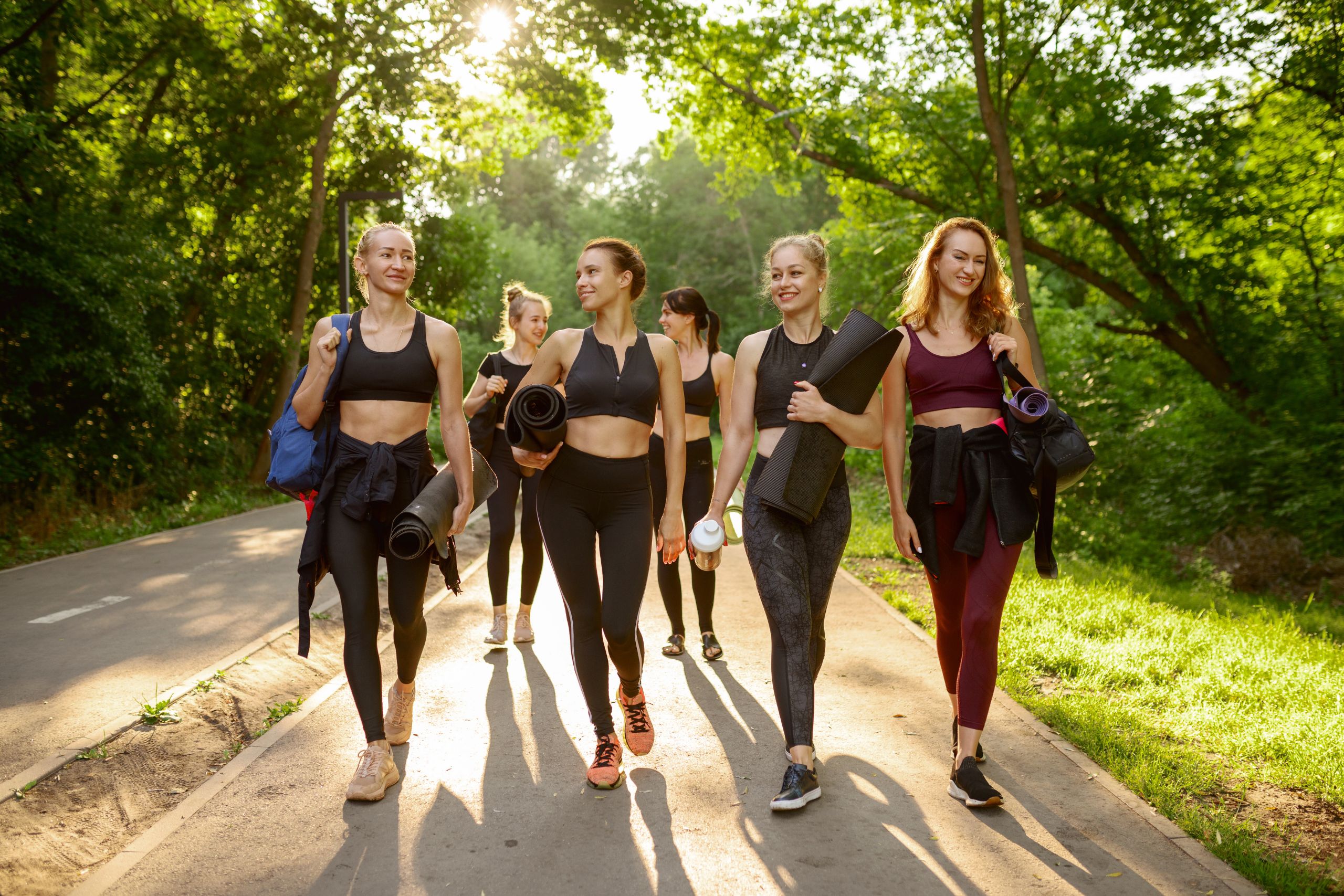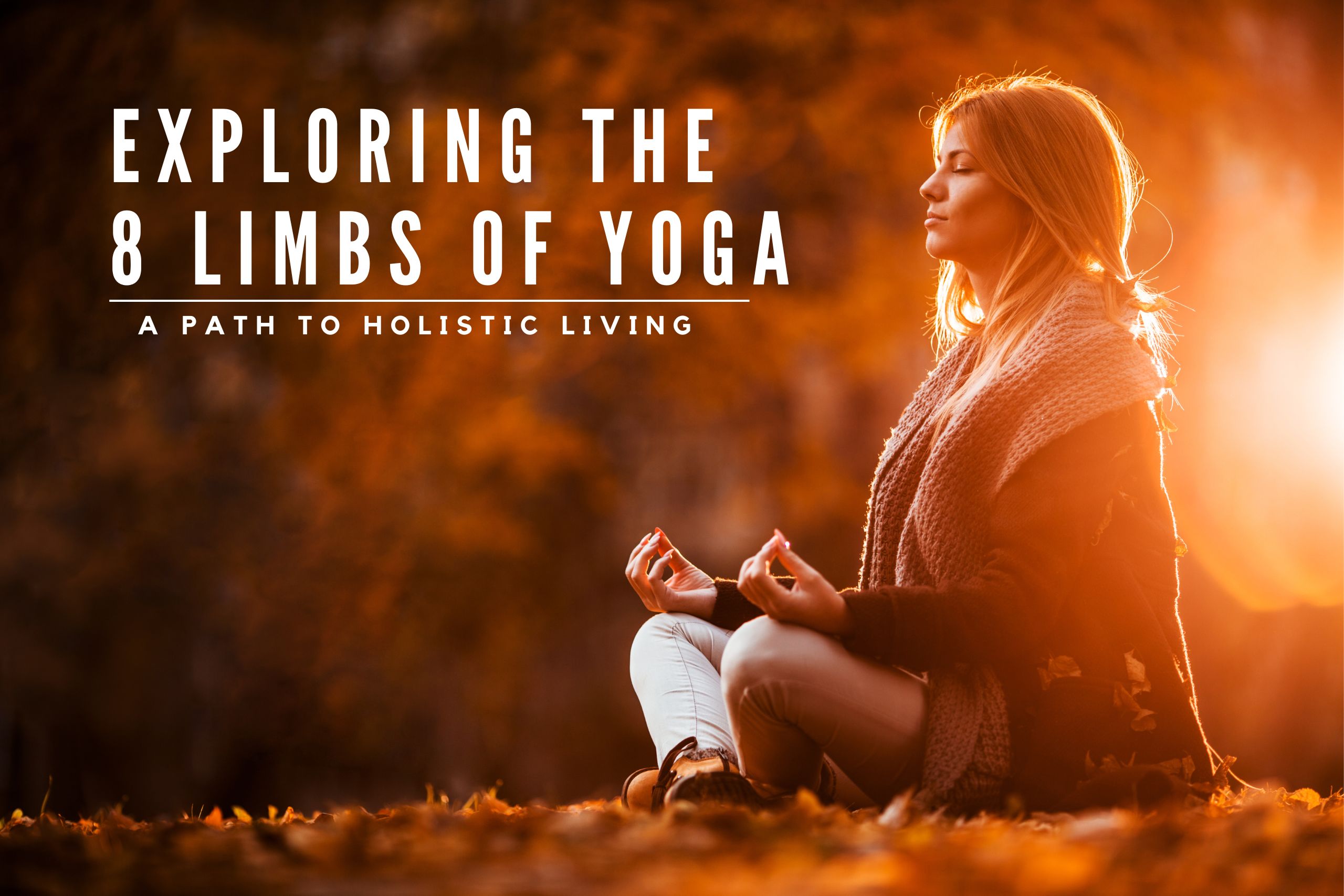Yogic Rituals To Relieve Insomnia - Poses, Meditation And Bedtime Healthy Habits
Table of Contents
- 1. Yoga Poses For Insomnia
- 1.1. Cat and Cow Stretch
- 1.2. Reclining Angle Bound Pose
- 1.3. Supine Twist
- 1.4. Thread the Needle Pose
- 1.5. Extended Puppy Pose
- 1.6. Child Pose
- 1.7. Savasana
- 2. Yoga Nidra For Insomnia
- 3. Tips To Sleep Better
- 3.1. Warm Bath
- 3.2. Soothing Environment
- 3.3. Body Stretch
- 3.4. Relaxation Practice
- 3.5. Avoid Caffeine
- 3.6. Journaling
Trouble falling asleep, staying asleep, or feeling tired even when one has had enough chance to sleep, are all signs of insomnia. Insomnia might be caused due to poor digestion process, anxiety, depression, poor lifestyle choices, and other factors. According to experts, an alternative reason for insomnia is an excess of Vata in the system, one of the three doshas. Vata means - the air or wind element, which is dry and light in nature. Vata encourages imagination, and adaptability, when in balance. However, when imbalanced, it can lead to anxiety and lack of focus. Yoga for insomnia can help those who are having trouble falling asleep by addressing the mental and physical elements of sleep through a variety of methods.
Yoga Poses For Insomnia
Yoga poses for sleep offer a slow and gentle exercise in your daily schedule to release all the physical and mental tension. It treats chronic pain, which is frequently linked to sleeplessness.
Cat and Cow Stretch
The cat and cow stretch incorporates a gentle flexion and extension of the spine which engages the muscles of the abdomen and the lower back.
Steps:
-
Starting on all fours, place your hands under your shoulders and your knees under your hips to perform the cat-cow stretch.
-
Breathe in as you drop your belly, arch your back, and raise your head (Cow Pose).
-
Breathe while bending your back and bringing your chin to your chest (Cat Pose).
-
Perform for 5-8 rounds.
Reclining Angle Bound Pose
Stretches the inner thighs, and abdominal and leg muscles. It relaxes and refuels the body.
Steps:
-
Lie down on your back.
-
Bent your knees sideways so that the soles of the feet touch each other. Try to bring the feet closer to your buttocks.
-
Feel the muscles in the groin stretching as you lower your knees toward the floor.
-
Take a deep breath and stay in this posture for 30 seconds.
Supine Twist
It stabilizes the core and stretches the spine to calm the nervous system. It opens the hip to release tension.
Steps:
-
Lie down on the back. Bring the knees close to your chest.
-
Extend your arms straight out to the sides.
-
Let the legs drop to the left as the right knee stacks on the left.
-
Try to drop the right shoulder toward the floor.
-
Look over the right shoulder.
-
Hold for 30 seconds. Continue on the opposite side.
Thread the Needle Pose
It eliminates the stress from the back and shoulder.
Steps:
-
Come to a tabletop position facing the floor
-
Lift the left arm and bring it beneath the right arm
-
Keep the hips up and let the chest rest near the ground
-
Avoid putting too much pressure on the right arm.
-
Hold the pose for 5-8 deep breaths.
-
To release, slowly bring the left arm out on the tabletop. Repeat the same with the right side.
Extended Puppy Pose
As you extend the arms the upper back and spine are stretched which promotes a sense of relaxation in the muscles.
Steps:
-
Come to your fours in the tabletop position.
-
Extend your hands forward and lower the body until you can release your head onto the floor while maintaining the hip position.
-
Separate the shoulder blades and widen the shoulders.
-
Hold for 30 seconds
Child Pose
The child pose promotes calmness and creates and sense of stability.
Steps:
-
Place your knees slightly apart on the ground.
-
Exhale and bend forward. Slightly tuck your chin.
-
Extend the arms on the ground in front or extend them back toward the feet, palms up.
-
Let the weight of the shoulders stretch the shoulder blades widely across the back.
-
Breathe gently and deeply for 30 seconds.
Savasana
Savasana helps to reduce physical exhaustion and helps to calm the thought process.
Steps:
-
Lie down on the back
-
Stretch your arms and legs out.
-
Make sure the body is relaxed and there is no stiffness
-
Take deep gentle breaths to release any tension and stress
-
Perform for as long as you feel comfortable.
Yoga Nidra For Insomnia
Yoga for insomnia includes an age-old relaxation technique yoga nidra includes resting on one's back in savasana and being guided to bring awareness to different body parts, breath, and images. During the practice of yoga nidra, one must remain awake and alert while entering a state of profound relaxation.
The parasympathetic nervous system is responsible for relaxing and rest and the sympathetic nervous system is responsible for taking action are balanced by yoga nidra. By stimulating the parasympathetic nervous system, Yoga Nidra for insomnia promotes relaxation and helps with better sleep.
To start the practice, begin by setting an intention. Pay attention to your breath and just observe the breathing mechanism of the rise and fall of the belly and chest. Let the awareness travel throughout your entire body and the body parts from toe to head and vice versa. Maintain awareness and let go of any tension in any region of the body. Join a yoga teacher training course to learn the technique of Yoga Nidra.
Tips To Sleep Better
Including yoga in the daily routine, can help the body get ready for sleep. Establishing good sleep habits requires consistency.
Warm Bath
Taking a relaxing bath enhances the body's 24-hour temperature cycle. An innate biological clock - the circadian rhythm regulates the variations of the body temperature throughout the day. To expel heat from the body's core, one must do it through the surfaces on the outside of your body. The shower or bath increasing the body's natural cooling process might help encourage sleep.
Soothing Environment
Yoga for insomnia also ensures that one successfully creates sleep hygiene. Ensure the temperature of the room is comfortable and pleasant. Use candles or an essential oil diffuser to create a relaxing aroma. One may also use earplugs to block out noises or may even listen to calming sounds or binaural frequencies to fall asleep. Try to avoid looking at the phone, TV screens or any kind of blue light before falling asleep.
Body Stretch
After a long day of sitting at a desk, walking, or standing, relaxing the body may help sleep more peacefully. Including light stretching in your wind-down routine helps ease muscular tension and increase blood flow. Yoga can be beneficial in encouraging better sleep if it is practiced attentively with suitable poses and practices. For instance, avoid strenuous yoga practices right before bed. The stretches promote restorative sleep and healthy muscles.
Relaxation Practice
Yoga for insomnia frequently uses meditation as a way to increase awareness and a sense of calm. Meditating triggers the relaxation response in the body, which lowers blood pressure and heart rate. It also reduces the cycle of anxious thoughts which may interfere with the sleep cycle. A relaxation practice may range from guided imagery, yoga nidra practice, or mindfulness meditation.
Avoid Caffeine
Try to avoid caffeine as it can interfere with the physiological process of falling asleep. However similar results of relaxation can be obtained with decaffeinated drinks like warm milk or herbal teas without the stimulant effects of caffeine.
Journaling
Maintaining a gratitude journal can help to get better sleep by encouraging relaxation, and providing a systematic way to process your feelings and ideas. Writing down the thoughts from the day or the to-do lists for the next day before you sleep can assist in keeping your thoughts from racing.
It's crucial to remember that all experiences with yoga for insomnia and how it affects sleep are different. Regular practice and consistency are essential to benefit from the practice. In case of severity or further guidance, one may consult a yoga expert or a healthcare professional.


